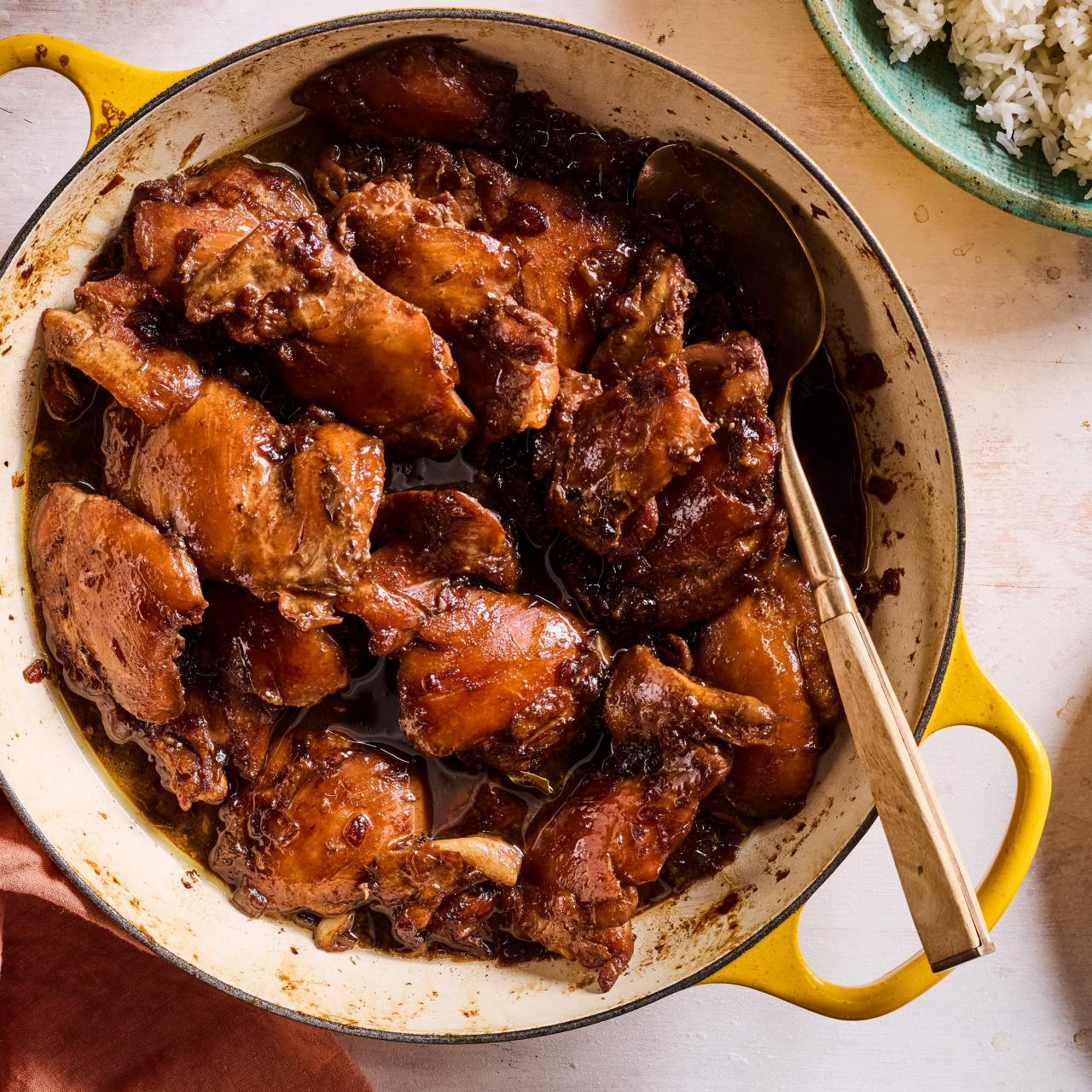Enjoy Iconic Filipino Food Recipes Everyone Loves.
Appreciate Standard Filipino Flavors With Easy-To-Follow Recipes
Discovering standard Filipino food uses an unique opportunity to involve with an abundant tapestry of flavors and social stories. As we discover these culinary practices, one may question exactly how to ideal bring the heat of Filipino hospitality to their very own dining table.

Overview of Filipino Food
Discovering the vivid tapestry of Filipino cuisine discloses a rich social heritage affected by numerous historic and geographical variables. As an outcome, Filipino cuisine is a special mix of Malay, Spanish, Chinese, and American elements.
Rice serves as the cornerstone of Filipino meals, often accompanied by an array of vegetables, meats, and fish and shellfish. The use of strong tastes is a hallmark of the food, with components such as garlic, onions, ginger, and soy sauce playing pivotal duties. The focus on common eating reflects the Filipino culture of hospitality and household ties.
Road food likewise plays a significant duty in the cooking scene, showcasing neighborhood components and imaginative food preparation methods. As the Philippines continues to embrace globalization, the combination of standard and modern influences can be seen in modern Filipino recipes, additionally improving its cooking identity. Filipino food recipes. In general, Filipino food is a testimony to the country's background, culture, and lively spirit
Must-Try Conventional Meals
Filipino cuisine is finest experienced via its typical meals, each using a distinct insight into the country's varied cooking heritage. Amongst the must-try dishes is Adobo, a mouthwatering stew normally made with poultry or pork, seasoned in vinegar, soy sauce, and garlic prior to being slow-cooked to perfection. Its rich and tasty flavor account stands for the heart of Filipino home cooking.
An additional legendary meal is Sinigang, a sour soup commonly prepared with tamarind, tomatoes, and various veggies. This recipe can feature pork, shrimp, or fish, and is cherished for its revitalizing preference and warming up high qualities.
Lechon, a whole baked pig, is a focal point at Filipino events, recognized for its crunchy skin and tender meat. It personifies the festive spirit of Filipino events.
For those craving something pleasant, Halo-Halo is a wonderful dessert combining crushed ice, sweetened fruits, jellies, and topped with leche flan and purple yam.
Each of these traditional meals envelops the significance of Filipino society, welcoming anybody to savor the lively flavors and abundant background that specify the island chain's culinary landscape.
Step-by-Step Recipes
Cooking authentic Filipino recipes in your home can be an enhancing experience that brings the dynamic tastes of the Philippines into your kitchen visit here area. With a variety go to this website of typical dishes to pick from, using step-by-step dishes permits both novice and experienced chefs to understand the strategies and flavors indispensable to Filipino food.
Begin by picking a recipe that intrigues you, such as adobo, sinigang, or lumpia. Each recipe commonly includes an in-depth active ingredient listing complied with by clear instructions, directing you with the cooking procedure. Start with prep work, which might include marinating healthy proteins, chopping vegetables, or measuring seasonings. This foundational step guarantees a smooth cooking experience.
As you proceed, pay close attention to food preparation methods special to Filipino cuisine, such as sautéing (ginisa) or stewing (nilaga) These approaches can substantially improve the depth of taste in your recipes. In addition, timing is important; follow the recommended food preparation times to achieve the perfect texture and taste.
Crucial Components and Tips
Frequently, the secret to grasping Filipino cuisine depends on understanding and utilizing necessary components that specify its distinctive tastes. Central to numerous meals are staples like soy sauce, vinegar, garlic, and ginger, which add to the one-of-a-kind balance of tasty, sour, and sweet notes. Soy sauce acts as a base for marinates and sauces, while vinegar, especially cane vinegar or coconut vinegar, passes on a tangy brightness that is important in meals like adobo.
Rice is an essential component of Filipino dishes, usually served along with primary courses to absorb savory sauces. For a touch of credibility, decide for jasmine or long-grain rice. In addition, utilizing fresh fruit and vegetables such as tomatoes, green beans, and eggplants enhances the meal's vibrancy and dietary worth.
Do not overlook the relevance of natural herbs and seasonings, such as bay leaves, lemongrass, and chili peppers, which elevate the taste account. When food preparation, keep in mind that patience is key-- allowing active ingredients to meld with each other causes richer tastes. Welcome the method of tasting as you go; this will allow you to readjust spices and achieve the perfect balance that characterizes Filipino food.
Offering and Taking Pleasure In Filipino Meals
Understanding the subtleties of Filipino cuisine expands beyond prep work and ingredients; it encompasses the means dishes are offered more information and appreciated. The Filipino eating experience is characterized by public sharing, advertising a sense of togetherness and event. Normally, meals exist in large portions, allowing restaurants to participate in a range of flavors.
Rice, a staple in Filipino dishes, is frequently acted as the structure whereupon the various other meals remainder. Coming with viands, such as adobo, sinigang, or lechon, are placed in the center of the table, inviting visitors to serve themselves. Filipino food recipes. This practice not just cultivates a relaxed ambience however also encourages discussions and connections among diners

Conclusion
In conclusion, traditional Filipino food supplies an abundant tapestry of tastes and cultural relevance, welcoming exploration through its diverse meals. Engaging with this dynamic food not just enriches the eating experience but additionally maintains and celebrates the heritage of the Filipino individuals.